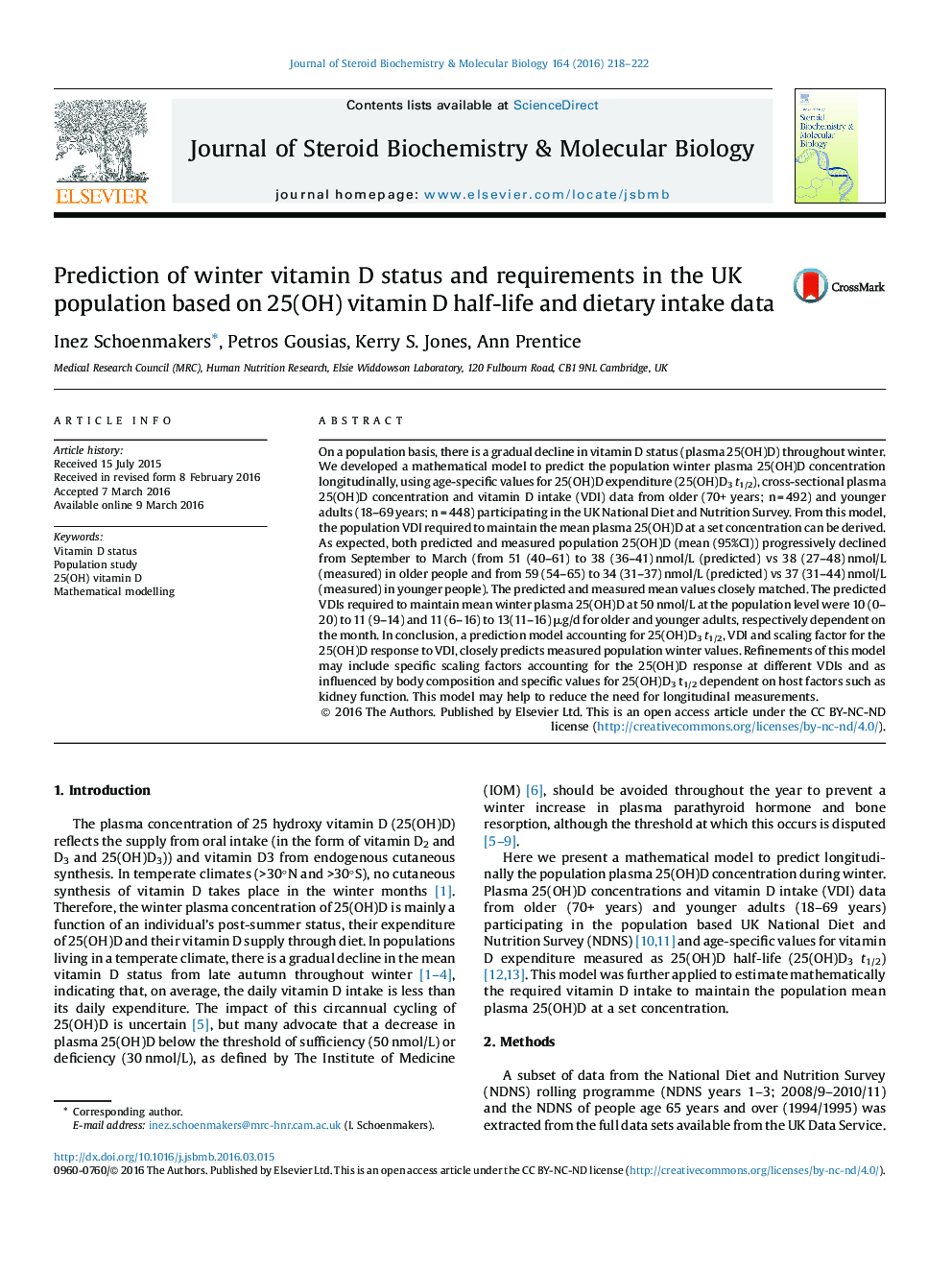| کد مقاله | کد نشریه | سال انتشار | مقاله انگلیسی | نسخه تمام متن |
|---|---|---|---|---|
| 5513249 | 1540984 | 2016 | 5 صفحه PDF | دانلود رایگان |

- We developed a mathematical model to predict longitudinally the population mean plasma 25(OH)D concentration during winter.
- Predicted values closely matched plasma 25(OH)D concentrations as measured in the UK population.
- Vitamin D intake required to maintain the population mean plasma 25(OH)D concentration at a predetermined concentration can be predicted from this model.
On a population basis, there is a gradual decline in vitamin D status (plasma 25(OH)D) throughout winter. We developed a mathematical model to predict the population winter plasma 25(OH)D concentration longitudinally, using age-specific values for 25(OH)D expenditure (25(OH)D3t1/2), cross-sectional plasma 25(OH)D concentration and vitamin D intake (VDI) data from older (70+ years; n = 492) and younger adults (18-69 years; n = 448) participating in the UK National Diet and Nutrition Survey. From this model, the population VDI required to maintain the mean plasma 25(OH)D at a set concentration can be derived. As expected, both predicted and measured population 25(OH)D (mean (95%CI)) progressively declined from September to March (from 51 (40-61) to 38 (36-41) nmol/L (predicted) vs 38 (27-48) nmol/L (measured) in older people and from 59 (54-65) to 34 (31-37) nmol/L (predicted) vs 37 (31-44) nmol/L (measured) in younger people). The predicted and measured mean values closely matched. The predicted VDIs required to maintain mean winter plasma 25(OH)D at 50 nmol/L at the population level were 10 (0-20) to 11 (9-14) and 11 (6-16) to 13(11-16) μg/d for older and younger adults, respectively dependent on the month. In conclusion, a prediction model accounting for 25(OH)D3t1/2, VDI and scaling factor for the 25(OH)D response to VDI, closely predicts measured population winter values. Refinements of this model may include specific scaling factors accounting for the 25(OH)D response at different VDIs and as influenced by body composition and specific values for 25(OH)D3 t1/2 dependent on host factors such as kidney function. This model may help to reduce the need for longitudinal measurements.
Journal: The Journal of Steroid Biochemistry and Molecular Biology - Volume 164, November 2016, Pages 218-222